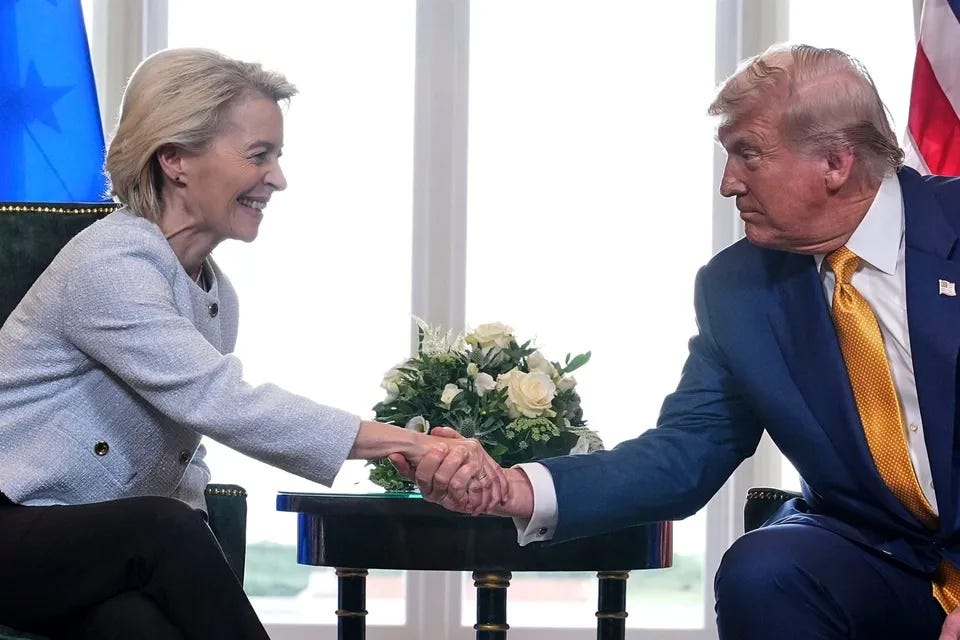Europe Backs Down: 15% Tariff Truce Masks a Bigger Shift
What happened?
After marathon negotiations at Trump's Turnberry resort, Washington and Brussels reached an agreement to impose a 15% "baseline" tariff on nearly all EU goods, including cars. Meanwhile, tariffs on steel and aluminum will remain at 50%. In exchange, the EU pledged $600 billion in investments and additional purchases of US energy and defense equipment. Internal divisions left the bloc "scrambling" and ultimately accepting terms that critics dub a "tariff steamroller." The effective US tariff rate increased from 2.5% to around 15%, generating $300 billion in annual revenue, while the dollar has weakened, not strengthened, confounding textbook forecasts.
Source: Associated Press (Trump and von der Leyen reaching a trade deal on July 27, 2025)
Why does this matter?
Structural precedent: The first across-the-board tariff imposed on an ally sets a minimum tariff rate of 15% for US trade, far above the pre-Trump average. The $300 billion in annual tariff revenue provides a new source of income at a time when election-year tax cut proposals are increasing the deficit.
Corporate winners and losers: German carmakers avoid the threatened 30% tariff but still face rising costs. Meanwhile, EU steelmakers receive partial relief through quotas, and US LNG and arms suppliers receive guaranteed orders. Brussels estimates that higher import costs and re-routed supply chains will lower GDP by 0.3 percentage points in 2026.
Currency dynamics: Continued foreign divestment from dollar assets, linked to tariff uncertainty, explains the dollar's decline despite a goods surplus.
What's the counterpoint?
EU officials argue that the 15% ceiling averts a ruinous trade war and delivers predictability. They also claim that steel quotas safeguard a strategic sector. Meanwhile, US analysts claim that AI-driven capital expenditures and prospective corporate tax relief offset the drag of tariffs and keep the odds of a recession low.
finformant view
The deal buys peace but establishes a new protectionist baseline. Expect: 1. EU diversification via deeper talks with CPTPP members. 2. Fed headache: Tariff-driven inflation and a weaker dollar complicate the path of interest rates. 3. Countries selling to both blocs may adopt dual pricing to absorb the tariff difference. Euro-area exporters, who are caught between tariffs and a sagging currency, are likely to lose out.



